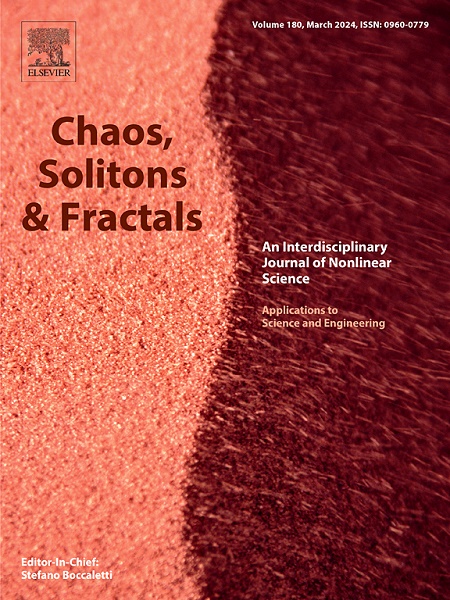Bifurcation analysis, chaos control, and FAST approach for the complex dynamics of a discrete-time predator–prey system with a weak Allee effect
IF 5.3
1区 数学
Q1 MATHEMATICS, INTERDISCIPLINARY APPLICATIONS
引用次数: 0
Abstract
In this paper, we analyze the complex dynamics of a discrete-time, Leslie-type predator–prey system that exhibits a weak Allee effect where the prey population has a mate-finding Allee effect. This discrete mathematical model has been obtained by applying the forward Euler scheme to its continuous-time counterpart. First, stability and bifurcation analyses are performed to explore the stability of positive equilibrium points and to identify critical points where dynamic behavioral transitions occur. Then, center manifold theory and normal form theory are used to classify bifurcations, including Flip bifurcation and Neimark–Sacker bifurcation, revealing the emergence of chaos and periodic orbits in the system by choosing integral step size as a bifurcation parameter. Specifically, numerical examples are presented to illustrate and support the theoretical results, thereby demonstrating the practical application of the theory. Next, we implement chaos control strategies, namely the feedback control method, to control chaotic dynamics. In addition, we apply the FAST method to improve the efficiency of our numerical simulations, allowing a more detailed exploration of the parameter space. Our results contribute to a better understanding of ecological interactions under the influence of the Allee effect and provide valuable insights for biodiversity management in predator–prey systems, especially for endangered populations.
求助全文
约1分钟内获得全文
求助全文
来源期刊

Chaos Solitons & Fractals
物理-数学跨学科应用
CiteScore
13.20
自引率
10.30%
发文量
1087
审稿时长
9 months
期刊介绍:
Chaos, Solitons & Fractals strives to establish itself as a premier journal in the interdisciplinary realm of Nonlinear Science, Non-equilibrium, and Complex Phenomena. It welcomes submissions covering a broad spectrum of topics within this field, including dynamics, non-equilibrium processes in physics, chemistry, and geophysics, complex matter and networks, mathematical models, computational biology, applications to quantum and mesoscopic phenomena, fluctuations and random processes, self-organization, and social phenomena.
 求助内容:
求助内容: 应助结果提醒方式:
应助结果提醒方式:


